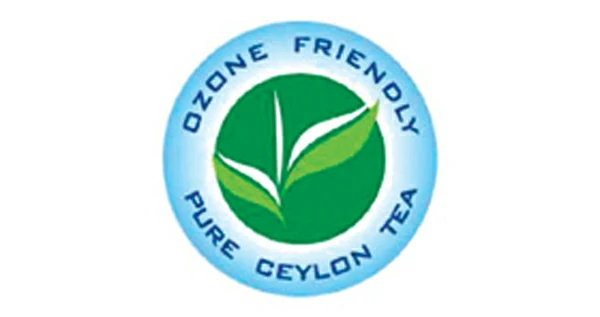
By Nalaka Gunawardene
Sri Lanka proudly serves the world’s first ozone friendly tea. Behind Sri Lanka’s recent launch of ‘Ozone Friendly Pure Ceylon Tea’ logo lies a remarkable success story in complying with a global environmental treaty while enhancing a major export industry. It was the culmination of a process that took many years and involved collaboration between government agencies, private companies, scientists and the international community.
The logo, already displayed on the packing of some tea manufacturers and distributors, will be rolled out to cover all tea exports from the island by 2012. This marks another value addition to the island’s best known export product that sustains an industry worth USD 1.5 billion a year.
The Sri Lankan tea industry has phased out the use of Methyl Bromide in all tea plantations. Instead, ozone-friendly substitutes are now being used to protect tea bushes from various pest attacks, particularly the nematodes (roundworms) found in tea nurseries.
Methyl Bromide is one of several dozen chemicals controlled by the Montreal Protocol to protect the ozone layer, adopted in 1987. This inter-governmental treaty has been signed by 196 countries. The Montreal Protocol, which Sri Lanka signed and ratified in 1989, requires all Methyl Bromide use to end by January 1, 2015 (except in emergency situations and quarantine purposes).
“Sri Lanka is renowned for its creative activities to raise public awareness on ozone layer protection. The Ozone-Friendly Ceylon Tea logo is another significant achievement of Sri Lanka,” says Atul Bagai, Senior Regional Coordinator with the UN Environment Programme (UNEP)’s OzonAction team.
He sees multiple benefits from this latest branding exercise, “considering the worldwide popularity of Ceylon Tea, this initiative will greatly contribute to the global efforts to protect the ozone layer.” In recent years, Sri Lanka’s tea industry has modernised manufacture, distribution and marketing. It has also responded to rising consumer expectations and regulatory requirements in export markets.
At a time when ethically and environmentally responsible products are gaining value and markets worldwide, the Sri Lanka Tea Board believes that ‘Ozone Friendly’ status can give a competitive advantage for Ceylon Tea. Hasitha De Alwis, director of promotion at the Tea Board, says Sri Lanka is the only country qualified to use the ‘ozone friendly’ logo for its tea. Tea producers and distributors who wish to use the logo need to obtain the franchise rights from Tea Board.
Prolonged efforts
Sri Lanka’s efforts to phase out Methyl Bromide in tea plantations were initiated by the National Ozone Unit of the Ministry of Environment over a decade ago. The Tea Research Institute (TRI), working with tea plantation companies, tested and found environment friendly alternatives. The Registrar of Pesticides, the state regulator for all agro-chemicals, was also consulted.
Methyl Bromide, also known as Bromo-methane, is a colourless, odourless and highly toxic gas at normal temperatures and pressures. This chemical has been widely used in agriculture since the 1930s as a fumigant to treat the soil against weeds, harmful insects and worms. It is also a versatile pesticide that works against various creatures that attack crops – both in the field and at storage – and buildings.
UNEP, which is supporting developing countries to meet the global phase-out of ozone-damaging chemicals without affecting their economic growth, says alternatives have been identified for most Methyl Bromide applications. These include using other chemicals, as well as non-chemical measures such as solarisation, exposure to steam or hot water, and crop rotation.
Dr Janaka Ratnasiri, then head of the Ministry’s Montreal Protocol Unit, recalls negotiations at Montreal Protocol meetings in the late 1990s. “We had to persuade other countries to get tea included in the list of crops eligible for research funding to eliminate Methyl Bromide.”
To make matters more difficult, he says, no other tea-growing country was using this chemical in their tea plantations. But his ‘scientific diplomacy’ worked, and these countries endorsed Sri Lanka’s case to add tea to the crop list.
The Multilateral Fund accepted the proposal and provided additional funding, channelled through the UN Development Programme (UNDP), to continue the research and field testing.
During the past few years, all Sri Lankan tea plantations – large and small – have gradually introduced substitutes to Methyl Bromide.
Many partnerships
It was the partnership between policy makers, researchers, tea plantation companies and the development donors that enabled the Sri Lankan tea industry to wean itself from a decades-long dependence on a trusted chemical.
“This is a good example of public-private partnership (PPP),” says Janaka Gunawardana, Director of the National Ozone Unit at the Ministry of Environment. “It was with the support from the private sector tea plantation companies that Sri Lanka was able to eliminate Methyl Bromide use. And now, we are using this environmentally responsible conduct to enhance the brand value of Ceylon Tea worldwide.”
“Public-private partnerships are very helpful in implementing international treaties such as the Montreal Protocol,” says Gunawardana. “They can be challenging at times, but we want to build up more collaborations with the private sector.”
In nearly a quarter century, the Montreal Protocol has reversed a catastrophic loss of ozone high up in the Earth’s atmosphere, preventing tens of thousands of cases of skin cancer and cataract. This was achieved by systematically reducing and eventually phasing out the use of nearly 100 chemicals used in industry, agriculture and household products.





